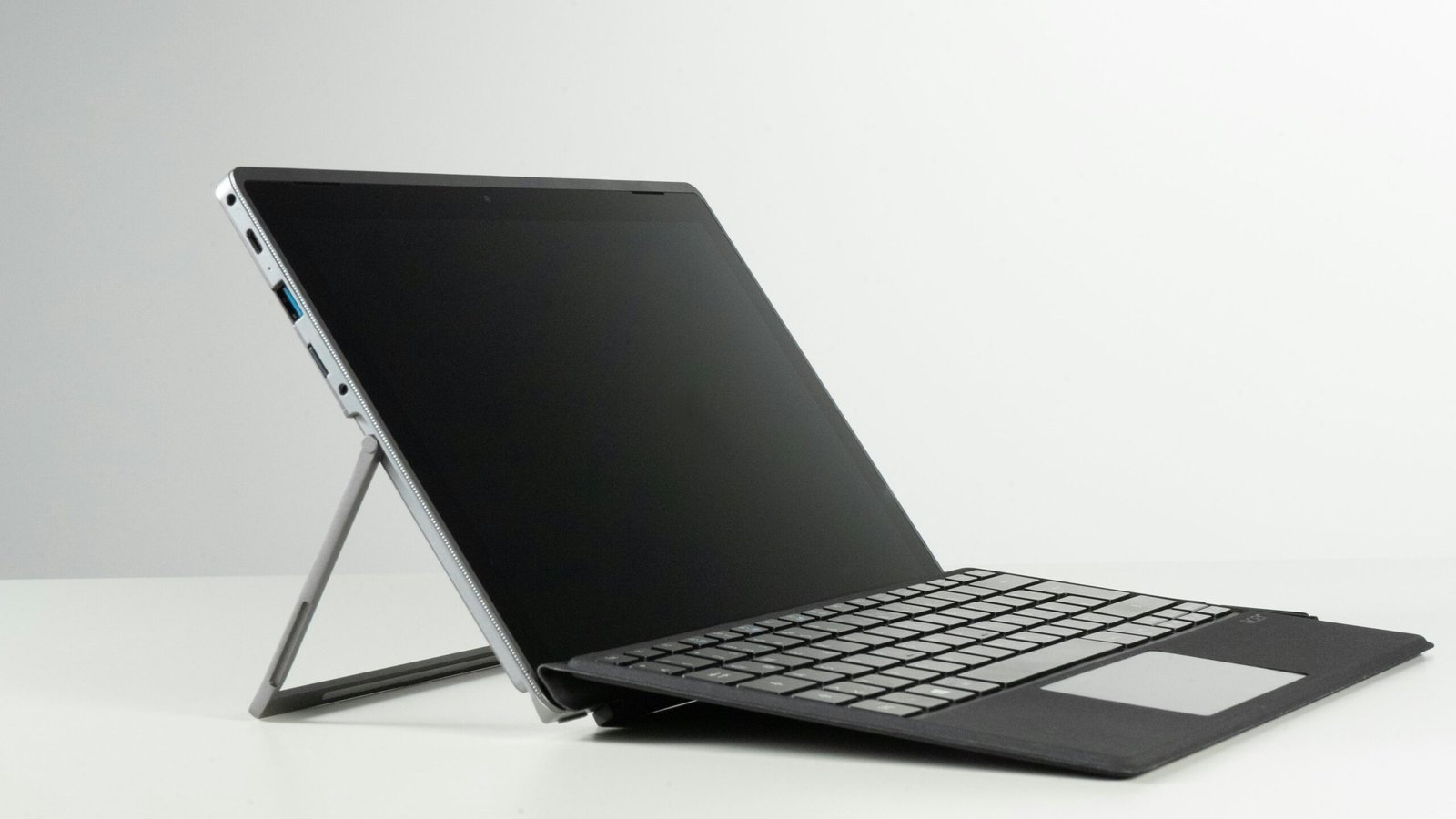Introduction to the Phone
In the ever-evolving landscape of mobile technology, the XYZ model has emerged as a notable contender, promising innovations and features aimed at both tech enthusiasts and everyday users. Marketed primarily to young professionals seeking a comprehensive device for both work and leisure, the XYZ phone is equipped with advanced specifications that include a high-resolution camera, a robust battery life, and a sleek design. The manufacturer, ABC Corp, launched this model with high expectations, buoyed by a vigorous marketing campaign that highlighted its cutting-edge technology and user-friendly interface.
From the outset, promotional materials emphasized the phone’s ability to seamlessly integrate into the fast-paced lives of its intended market, showcasing features such as a state-of-the-art processor designed to handle multitasking with ease, as well as a premium display that promises vibrant colors and clarity. Initial reviews from tech critics lauded these attributes, fueling consumer interest and leading many to believe they were on the brink of a revolutionary phone experience. However, the gap between initial praise and real-world application soon became evident as users began reporting a series of issues that contradicted the phone’s promising features.
What sets this phone apart from its competitors is not just its advanced offerings but the marketing narrative surrounding it. Expectations were built on the premise of delivering an exceptional user experience without compromise. This high level of anticipation contributed to the phone’s substantial launch, attracting attention from a wide demographic. Yet, as feedback began to accumulate, it became clear that the reality fell short of the initial hype. This divergence between expectations and actual performance ultimately highlights the significant impact of user reviews in revealing the true quality of a product and underscores the importance of realistic promotional messaging in the tech industry.
Highlighting the Promised Features
In the realm of consumer electronics, marketing plays a pivotal role in shaping user expectations and experiences. This is particularly evident in the smartphone industry, where manufacturers often employ a meticulous campaign to showcase innovative features and specifications. One such phone, which has garnered considerable attention due to its disappointing reviews, prominently advertised several key attributes that were expected to appeal to a wide audience.
First and foremost, the camera quality was a focal point of the marketing strategy. The promotional materials extolled the virtues of a multi-lens system equipped with advanced sensors and software capabilities, promising impeccable image capture both in bright and low-light conditions. The emphasis on features such as optical zoom and enhanced night mode was intended to position the phone as a leading choice for photography enthusiasts.
Equally significant was the highlighting of battery life. The manufacturer claimed that their state-of-the-art battery management technology would allow for extended use without the constant need for recharging. A frequently advertised feature included fast charging capabilities, which suggested that users could enjoy nearly a full day’s use from just a short period of charging.
Processor performance was another critical specification outlined in the promotional materials. The campaign touted the phone’s cutting-edge chipset, claiming that it could handle intense multitasking and demanding applications effortlessly. This promised performance was further accentuated by references to improved graphics rendering, which aimed to appeal to gamers and heavy users alike.
Design aesthetics also received significant attention in marketing efforts. The promotional visuals presented a sleek and modern device, with an emphasis on materials that suggest premium quality and durability. Various color options and finishes were showcased, aiming to attract users seeking a stylish and contemporary gadget.
Finally, any innovative technologies mentioned, such as enhanced biometrics or AI-driven features, were key to building excitement. By examining these promised attributes, we can better understand the disparity between consumer expectations and the actual user experiences reported in the reviews.
User Reviews and Feedback Summary
In examining the user reviews for the phone with poor ratings, it becomes evident that a consensus of dissatisfaction prevails across multiple platforms, including tech blogs, consumer forums, and e-commerce websites. Users have shared their experiences, pointing out a range of concerns that significantly tarnish the phone’s reputation.
One prevalent theme among negative reviews revolves around performance issues. Many users have reported that the device exhibits sluggish behavior, particularly when multitasking. Complaints regarding delayed app launches and frequent lagging during regular use have tarnished the overall user experience. A common sentiment echoes the frustration felt by individuals who expected a more fluid operation, echoing the disappointment from promising marketing claims.
Another aspect that has garnered negative feedback pertains to battery life. Numerous users have expressed frustration regarding the phone’s inability to hold a charge effectively. Many reviews cite the device requiring frequent recharging—sometimes even multiple times throughout a single day—which significantly undermines its usability, especially for those relying on their phones for extended periods.
Furthermore, complaints about hardware quality have surfaced in various reviews. Issues such as poorly designed buttons, prone to malfunction, and a build that feels less durable than advertised were frequently noted. The contrast to competitor models, which often emphasize superior craftsmanship, has left consumers feeling that their investment did not yield a satisfactory product.
Conversely, a few positive reviews have mentioned the phone’s attractive design and features. However, these sentiments are often overshadowed by the overwhelming number of negative comments highlighting performance, battery issues, and build quality. This toxicity in feedback reflects a broader concern that prospective buyers must carefully consider before making an informed purchasing decision.
Expert Opinions and Tech Reviews
In examining the performance and reception of the phone in question, it is imperative to consider insights from technology experts and reviewers who have rigorously evaluated its functionality. Numerous online platforms that specialize in tech reviews provide a wealth of critiques that echo the sentiments of frustrated users. For instance, leading tech review sites often cite issues concerning the device’s hardware, such as subpar processing speeds and inadequate battery life, which align with the feedback given by everyday consumers.
Many professionals have highlighted how the phone’s hardware components do not live up to the expectations set by its marketing. With reviews pointing out performance lags, inconsistent camera quality, and a less than satisfactory display under different lighting conditions, it becomes evident that the phone may not be a wise investment for those prioritizing performance and reliability. Moreover, experts have raised concerns regarding the phone’s software optimization, noting that despite having a modern operating system, the user experience is marred by unexpected crashes and a lack of critical updates.
The opinions of accredited reviewers serve to validate user experiences by delving deeper into what makes this phone less favorable compared to its competitors. In addition, benchmarks conducted by trusted tech critics reveal that the device falls short in various aspects, including gaming performance and multitasking capabilities. With such discrepancies between user expectations and expert findings, it is crucial for potential buyers to consider these professional assessments in conjunction with user reviews before making a purchase decision.
Overall, the convergence of expert critiques and user testimonials paints a comprehensive picture of the phone’s shortcomings, providing a balanced perspective that serves anyone contemplating its purchase.
Comparison with Competitors
In the crowded smartphone market, consumers are often faced with multiple choices, particularly in the same price range. This analysis focuses on the phone in question and compares it with its direct competitors, examining various critical aspects such as features, performance metrics, and customer satisfaction ratings. The performance metrics are essential indicators of how well a phone operates under various conditions, which can collectively inform purchasing decisions.
One notable competitor, the XYZ Phone, boasts superior battery life, lasting up to two days on a single charge compared to the underwhelming battery performance of the phone under review. Additionally, XYZ Phone offers a more robust processing unit, which translates to faster operation during multitasking activities. Features such as higher RAM and advanced chipset technology give it a clear edge, resulting in smoother user experience and elevated performance metrics, particularly for gaming and resource-heavy applications.
Moreover, the camera capabilities of its closest rival, the ABC Phone, are significantly better than those of the phone in question. Users have reported higher customer satisfaction ratings due to the superior quality of photos, particularly in low-light conditions, an area where the phone in review falls short. In fact, many users have highlighted that clarity and detail in photographs greatly influence their purchasing decision, making ABC Phone a preferred choice.
Furthermore, user reviews often reveal that the smartphone ecosystem surrounding a device plays a vital role in overall satisfaction. Competitors like the DEF Phone not only deliver excellent hardware but also offer consistent software updates, adding value to the user experience. Overall, by benchmarking these features against the phone under scrutiny, it becomes evident that while it may cater to basic needs, it lacks the competitive edge provided by its counterparts in the same price tier. This analysis underscores the gaps in performance and customer satisfaction, inviting users to reconsider their options.
Common Issues Faced by Users
Purchasing a smartphone should be an exciting experience; however, many users have reported a range of issues that have turned their anticipation into disappointment. One of the most significant problems highlighted in user reviews pertains to software bugs. These glitches can manifest as unexpected app crashes, delayed response times, and even issues with system updates. Such persistent software failures have led many to question the reliability of the phone’s operating system, prompting frustration that detracts from the user experience.
In addition to software-related concerns, several users have reported hardware failures that compromise the functionality of the device. Common hardware issues include problems with the touchscreen sensitivity, battery life malfunctions, and speaker quality degradation. For instance, users have noted that their devices often fail to register touches accurately, making navigation tedious and frustrating. Battery life complaints are particularly troublesome, with many reporting that their devices do not hold a charge as advertised, leading to frequent disruptions and concern over the phone’s reliability during critical times.
Moreover, customer service experiences have aggravated the situation. Several users have expressed dissatisfaction with the support provided by the manufacturer, describing long wait times and unhelpful responses when seeking assistance for their problems. Support representatives may lack the adequate knowledge or training to resolve issues effectively, further compounding user frustration. When coupled with ongoing concerns about both software and hardware, subpar customer service can lead users to feel abandoned and overwhelmed by their choice of smartphone.
The culmination of these experiences paints a troubling picture for potential buyers. Prospective users may find themselves reconsidering their decisions if they are aware of the widespread issues reported by existing customers. Addressing these problems is crucial for the manufacturer to regain consumer trust and enhance the overall user experience.
Manufacturer Response and Updates
The smartphone industry is often scrutinized for its swift innovations and equally rapid response to consumer feedback. In light of the numerous bad reviews concerning the product in question, the manufacturer has taken steps to address the concerns raised by users. These responses are critical not only for immediate consumer satisfaction but also for the long-term reputation of the brand. Following the influx of negative commentary, the manufacturer issued several patches aimed at rectifying the performance-related issues that consumers had reported.
Among the most significant updates was a software patch intended to enhance the device’s battery life, which many users indicated was subpar. This update was accompanied by a user-friendly guide aimed at helping consumers navigate settings to optimize battery performance further. In addition, the manufacturer launched a series of beta updates that allowed select users to test new features and improvements before general release. This proactive approach can be seen as a strategy to build trust with their customer base, allowing for direct engagement and feedback mechanisms.
Moreover, the company established an online forum devoted to troubleshooting and collecting user suggestions for future updates. This platform serves as a critical communication channel where customers can share their experiences, thereby influencing the manufacturer’s ongoing development and refinement processes. While the effectiveness of these measures in restoring consumer confidence remains under observation, early indications show slight improvements in reviews following the latest updates. The long-term success of these initiatives will largely depend on the company’s commitment to continual support and transparency in addressing customer grievances. Overall, while the initial reception of the device was disappointing, the manufacturer’s responsive actions signal an earnest attempt to realign with consumer expectations.
Lessons Learned for Consumers
The experience shared by users concerning a phone with bad reviews highlights several pivotal lessons for consumers. One of the primary takeaways is the importance of thorough research before making a purchase. In today’s digital age, information is abundantly available at our fingertips, allowing potential buyers to conduct in-depth inquiries into product specifications and user experiences. By taking the time to compare different models, consumers can differentiate between high-quality devices and those that may not meet their expectations.
Another critical aspect that consumers should consider is valuing user reviews. Feedback from actual users often provides insights that technical specifications alone cannot convey. It is crucial to analyze both positive and negative reviews to obtain a well-rounded perspective on a product. Pay attention to recurring issues mentioned by multiple users, as these could indicate inherent flaws in design or functionality. Additionally, consider the credibility of the sources providing the reviews—reviews from reputable websites or trusted forums tend to be more reliable than those on lesser-known platforms.
Furthermore, understanding key factors such as warranty services, customer support, and potential resale value can significantly influence a purchasing decision. Consumers are advised to evaluate how responsive the manufacturer is in addressing customer complaints or issues. A product may possess great features, but if the after-sales support is lacking, it can lead to dissatisfaction.
Lastly, aligning a phone’s capabilities with one’s usage requirements is essential. Consumers should reflect on their needs—whether they require high processor speeds, excellent camera quality, or sufficient battery life. Recognizing what is truly important can empower future buyers, leading to informed decisions that enhance their overall satisfaction with a new phone.
Conclusion
Throughout our exploration of a phone characterized by negative reviews, it becomes clear that the influence of such feedback extends far beyond individual opinions. Bad reviews significantly affect a product’s reputation, which can lead to reduced sales and diminished trust from potential customers. When a product is publicly criticized, particularly in the tech industry, the perceived value significantly diminishes, making consumers more hesitant to invest in the device. This skepticism can result in a ripple effect, impacting not only the phone’s immediate sales but also the company’s overall market presence.
Manufacturers, when faced with a plethora of negative reviews, often experience increased accountability. As consumers become more reliant on reviews to guide their purchasing decisions, companies must address flaws highlighted by customers. If a device consistently receives poor ratings, manufacturers could be prompted to re-evaluate their design and production processes. This cycle highlights a growing expectation for improvement and innovation in product development driven by consumer feedback.
The repercussions of negative reviews extend into future product cycles. Companies may utilize the insights gained from customer dissatisfaction to refine future iterations of their devices, ensuring they better align with market expectations. For instance, a manufacturer might enhance features that were criticized in the reviews or completely redesign aspects that failed to meet user satisfaction. The relationship between consumer feedback and product evolution is, therefore, critical in shaping not only a company’s approach to a single device but its overarching strategy for the market.
In conclusion, the impact of negative reviews on a phone’s reputation and sales is profound, fundamentally influencing manufacturer accountability and shaping the trajectory of future products. As consumer behavior continues to evolve, so too does the imperative for companies to heed the lessons derived from past feedback. This interaction highlights the essential role that consumer voices play in driving quality and innovation within the technology sector.





